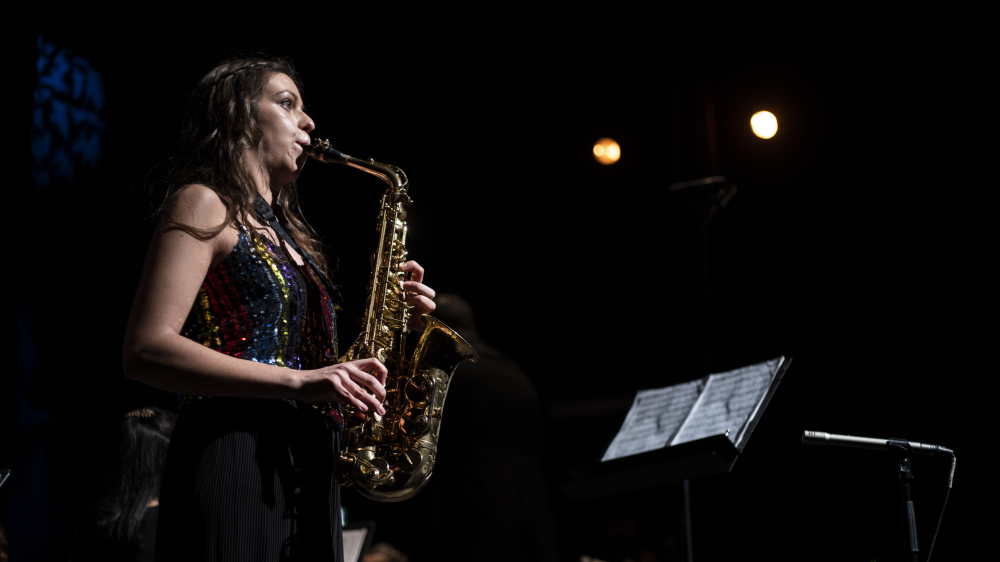First contacts and visit planning
My five-week research visit at RITMO between March and April 2022 was supported by the Portuguese Foundation for Science and Technology and my research centre, CITAR. The ongoing PhD research I’m carrying revolves around gesture-making in saxophone performance, so I couldn’t think of a better environment than RITMO to learn and discuss questions of musical motion and perception. I discovered the work conducted at RITMO early on my PhD journey and started following its news and events. After attending the 2021 edition of the MOOC “Music Moves”, and in 2022 the “Motion Capture” one, I knew visiting RITMO and, in particular, receiving guidance from Prof. Alexander Refsum Jensenius, would help me immensely in exploring movement analysis techniques and tools, as well as develop procedure routines to apply to the database I had already collected. In parallel, after participating in her online perceptual experiment, I exchanged some emails with PhD candidate Benedikte Wallace, where we talked about how to create alternative views on mocap data for perceptual tests, and how we could try to combine her research on AI with mine on musicians’ movement. In this sense, my goals during the stay were two folded: studying movement analysis and growing the collaborative work with Benedikte.
Engaging in RITMO’s workflow and developing movement analysis skills
A few days after my arrival, I attended RITMO Largo, the yearly conference where RITMO researchers present their work. This was a very nice introduction, as it allowed me to get an overview of the multiple lines of research being carried out and identify researchers with whom I would like to discuss my project. It was fascinating to see the interdisciplinarity and collaborative spirit that characterises the centre, which I was happy to continue experiencing for the following weeks. Also, in this initial phase, Prof. Alexander gave me an introduction lesson to the Mocap Toolbox for Matlab, where we discussed options for analysing saxophonists’ motion patterns in quantitative and qualitative ways. I continued exploring this topic during my time at RITMO and had the opportunity to clarify several doubts with Prof. Alexander as they came up. During this time, I also participated in a Pupillometry Workshop, cluster Interaction and Pleasure meetings, and Tejaswinee Kelkar’s classes on motion capture. I also enjoyed the meetings with other researchers sharing similar interests (for example, Laura Bishop and Dana Swarbrick), who contributed with useful advice and refreshing ideas. Concerning the collaboration with Benedikte, we focused on translating my data into a readable format for her generative algorithm, hypothesising it could create some AI-generated saxophone players’ representations. This project is still in progress at the moment.
Preliminary results presented at Food & Paper
I presented the evolution of my work at RITMO at the Food & Paper series on my last day. I was very pleased to end this stay with the accomplished goal of being familiar with Matlab and being able to use it for my analysis. Preliminary comparisons between two contrasting musical excerpts and two performative expressive conditions were made, including parameters such as the quantity of motion or time-series of position data and its derivatives, but also mocapgrams and 2D and 3D data visualisations. The video analysis app was complementarily handy for presenting different views on the data: horizontal and vertical motiongrams provided information about the swaying motion and motion average images about the body parts that moved more during performances. From this exploratory analysis, I was able to confirm that the upper body of saxophone players, particularly the left arm and instrument’s bell, seem to support the interpretative intentions of the performer. In contrast, the feet, for instance, mostly remain fixed independently from the expressive condition performed. It was also possible to detect that cycles of change in the movement of these body parts may relate to the rhythmic content of the excerpts and that contrasting excerpts elicit overall swaying motions with distinct amplitudes, potentially due to technical or pulse-related features. These are some hypotheses I will test over the following months, applying and refining the learned procedures to the complete database.

Thank you all for the amazing experience!
I came home with a warm heart, a “fed” brain, and tons of will to keep in touch and carry on the discussions and collaborations with members of the RITMO team. I would like to express my gratitude towards all those who spent a little of their time with me and contributed to the development of my research. More than that, I feel very lucky to say that I made some friends along the way who introduced me to the Norwegian style of living and invited me to fun activities outside the office. I’m confident I will meet you again in the future. Thank you so much for the incredible experience!
